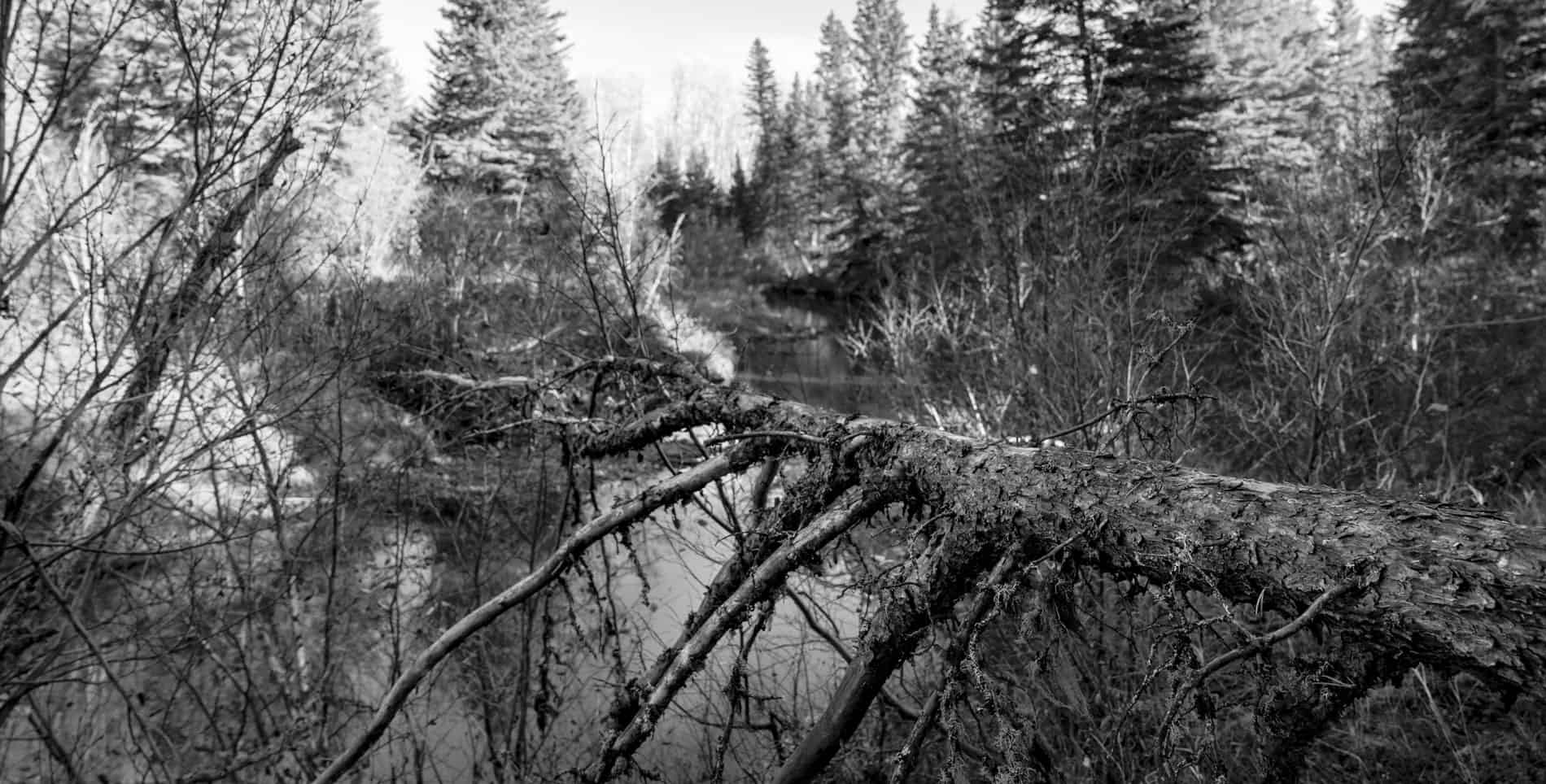About the Program
The Forest Health Monitoring Program, initiated by concerned citizens in the mid-1990s, integrates soil, vegetation, and epiphytic lichen monitoring with air quality and deposition monitoring to assess whether there are changes to biological, physical, and chemical indicators. Jack pine forest stands locations were selected for their sensitivity and/or exposure to oil sands related air emissions.
The program was developed on the principle that effects of deposition are expected to be observed in a cascading manner with changes in the chemical properties of the soil occurring first.
These changes may be in the availability of nutrients, the mobilization of aluminum, or both; subsequently, changes to vegetation, in response to altered soil chemistry, will occur. The changes to vegetation are expected to first be observed in altered distribution of nutrients and other elements in plant tissues, and later in changes in tree growth; and lastly, altered species composition would occur, as changes in soil chemistry and effects on vegetative growth create new competitive advantages and disadvantages among species at the site. This conceptual model is illustrated in the following graph.
Forest Health Monitoring Site Selection and Sampling
Jack pine forests growing on sandy soils (a1 ecosite phase – Beckingham and Archibald, 1996) have been selected as the acid-sensitive ecological receptor for long-term deposition monitoring in the region. These soils have relatively low acid buffering capacity and are expected to react measurably to acidic deposition. Monitoring analogous sites (to the extent that the environment allows) reduces variability within the measured parameters which increases the ability to detect responses to deposition and air emissions.
Forest Health Monitoring sites are sampled on a six-year interval. Each sampling event consists of soil, vegetation, and epiphytic lichen sampling and analysis, tree growth measurements, and understory community composition assessments. Additional sampling of epiphytic lichen has occurred outside of the routine forest sampling events for source apportionment studies and to evaluate spatial and temporal changes in atmospheric deposition.
Interior monitoring sites, which essentially are forest stands surrounded by other trees, consist of the following monitoring components:
- a permanent vegetation monitoring plot containing trees and understory species that best represent the stand;
- four permanent soil monitoring plots divided into four subplots of equal area; and
- a set of off-plot trees with the same growth form, in an area of similar density as those in the vegetation plot, that are tagged for destructive sampling (e.g., needle sampling, epiphytic lichen sampling). Off-plot trees are replaced once sampling compromises canopy structure, or if the tree is showing signs of disease, insect infestation, or physical damage.
Forest edge monitoring sites, which are sites located on the edge of a forest and open space, are expected to provide an early indication of environmental change relating to emissions and deposition. The forest edge monitoring locations consist of:
- a permanent vegetation plot (1/4 size of interior plot) oriented with the long axis parallel to the stand edge; and
- a set of off-plot trees for destructive sampling.

